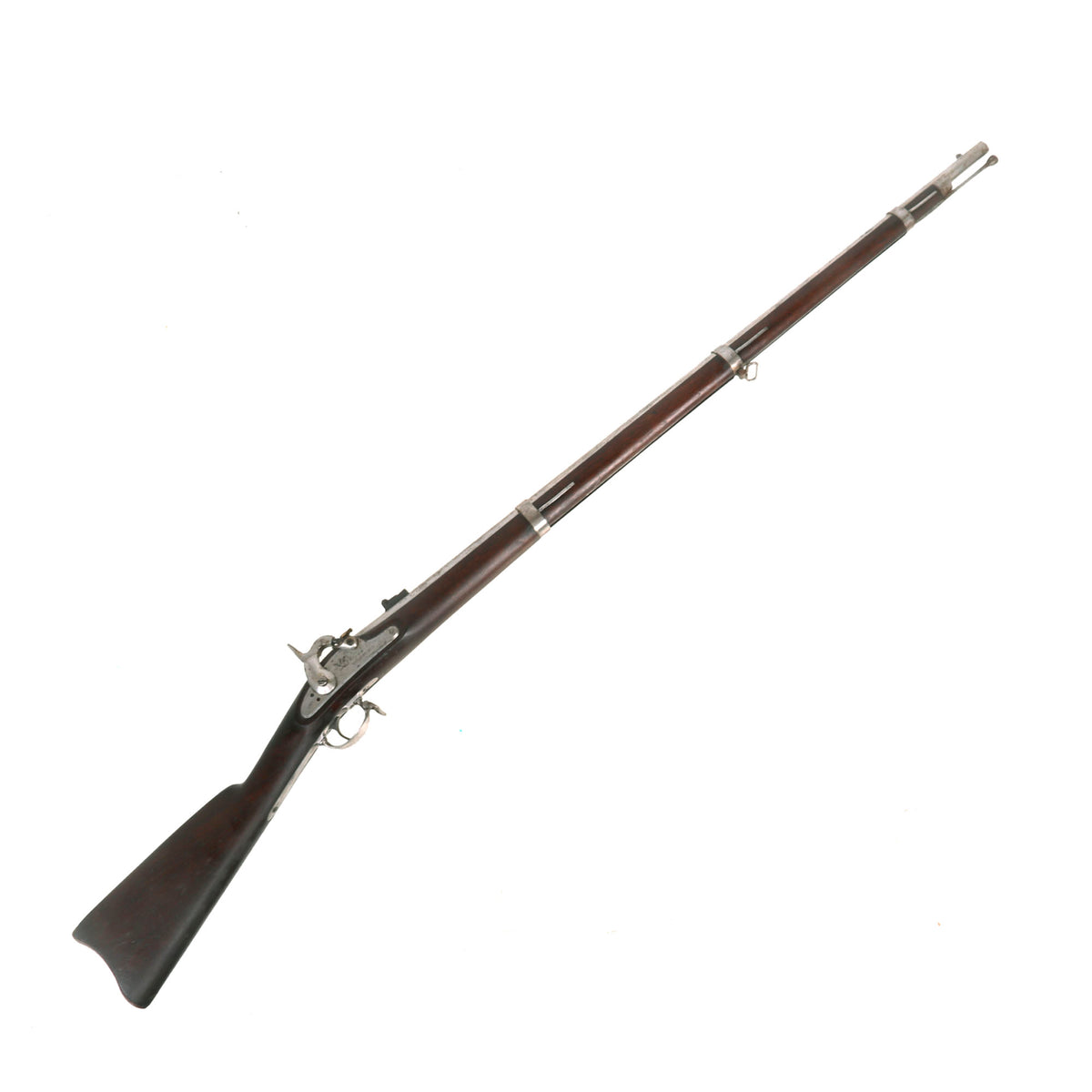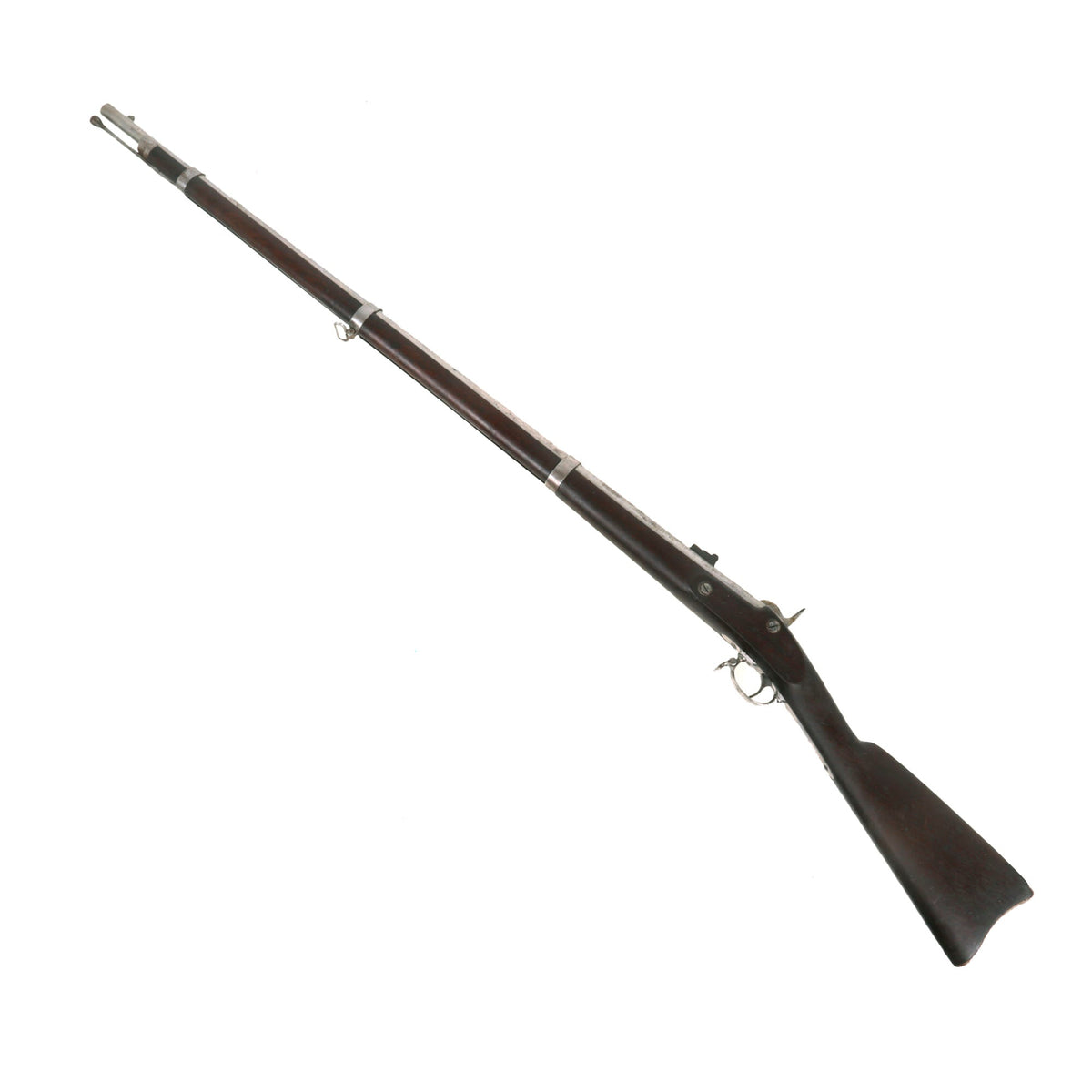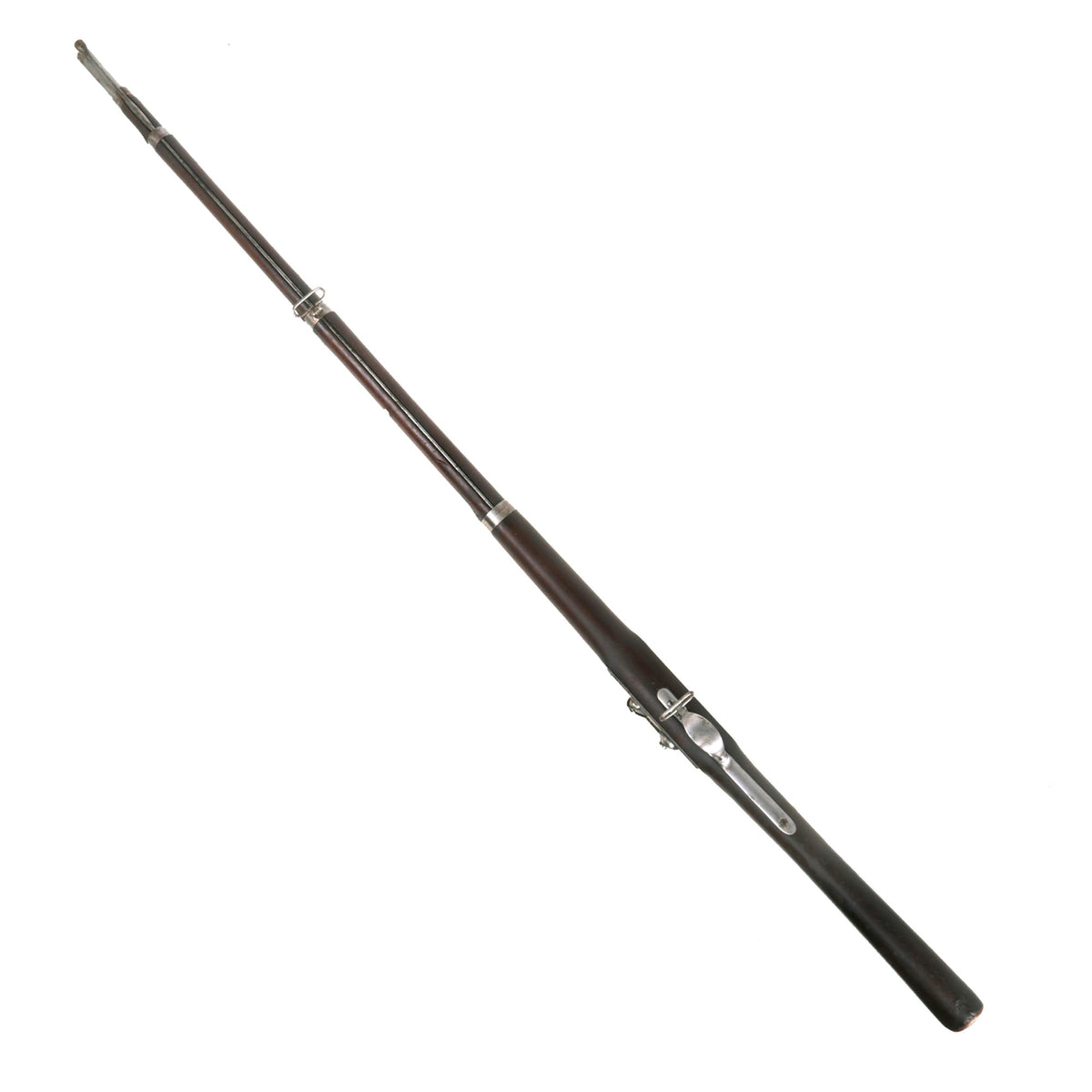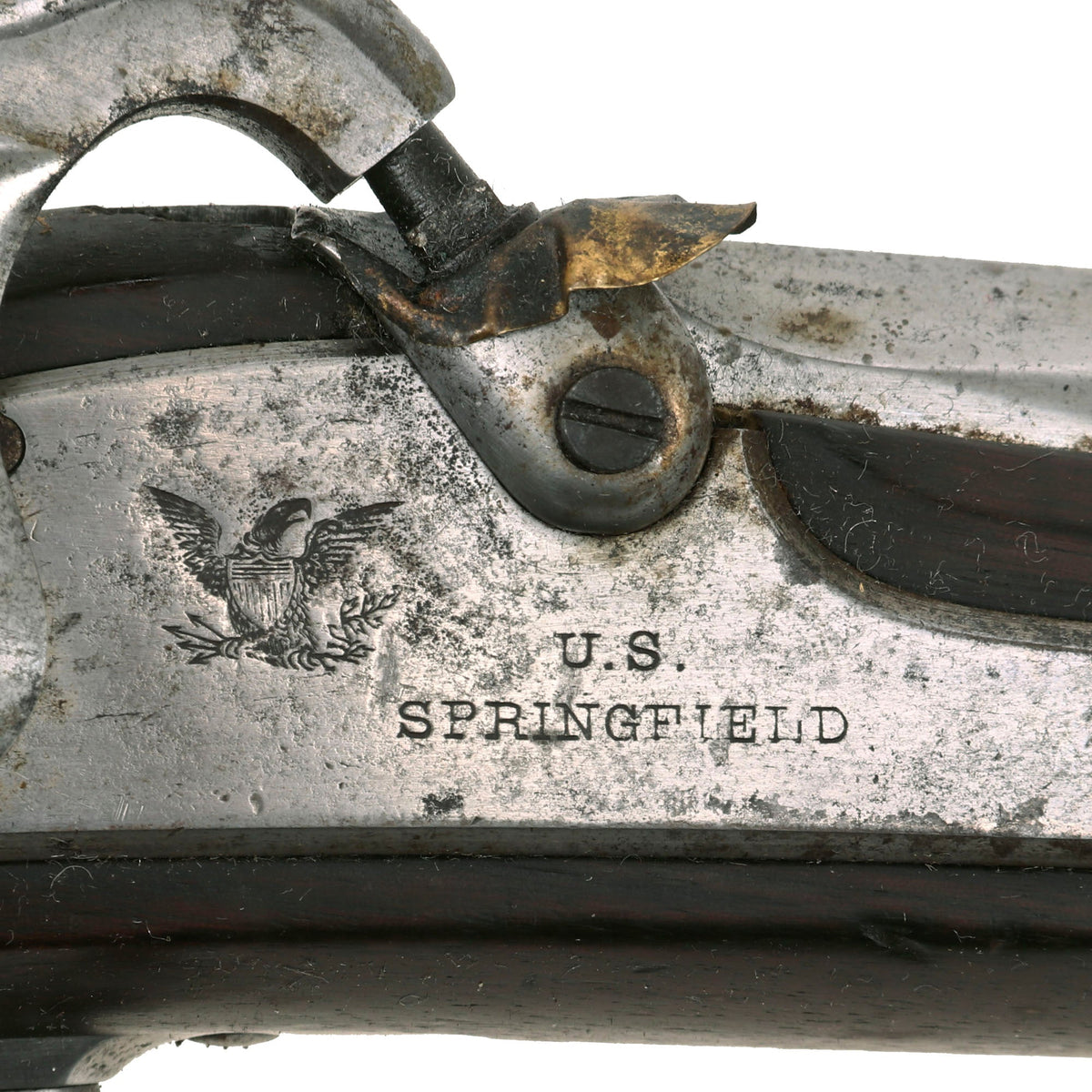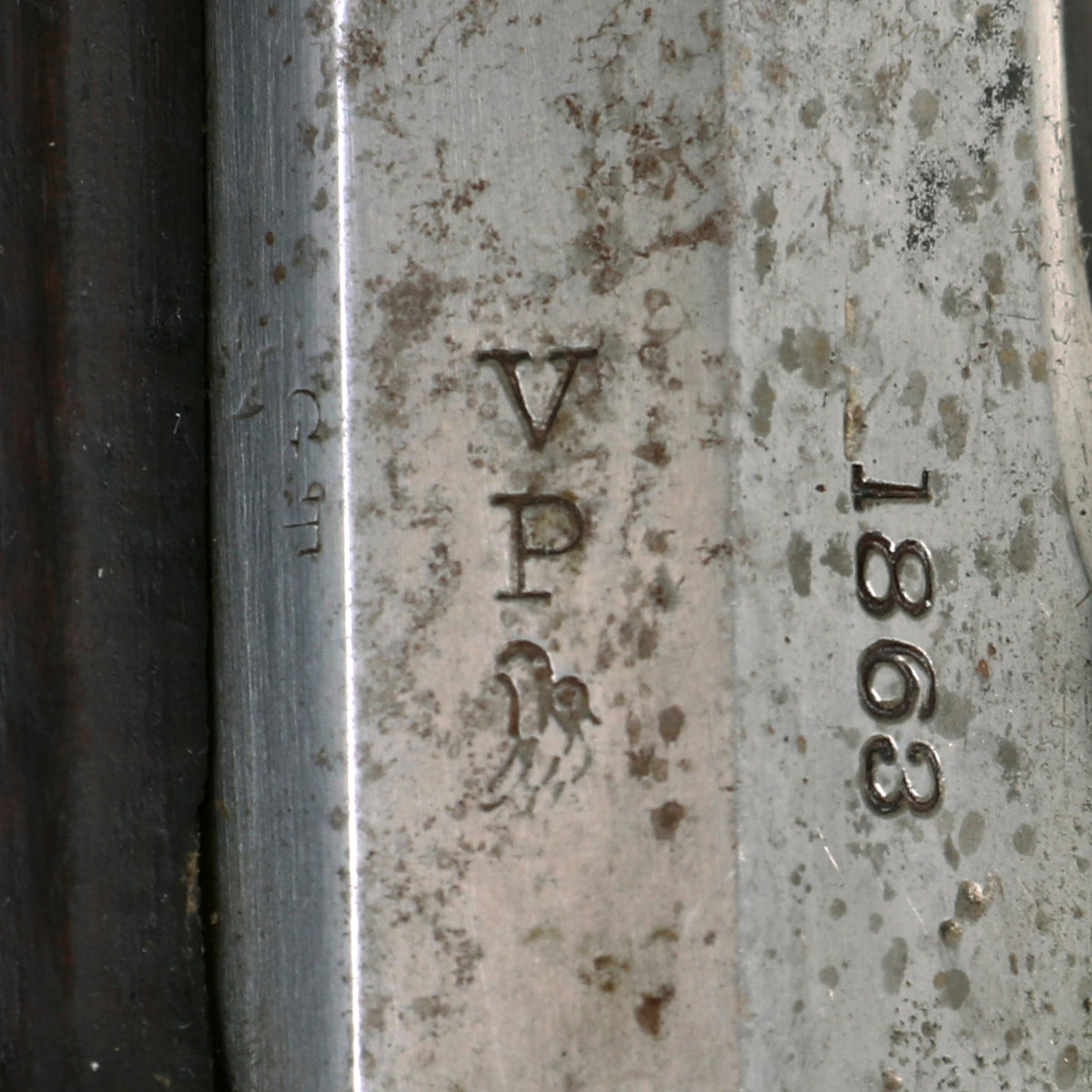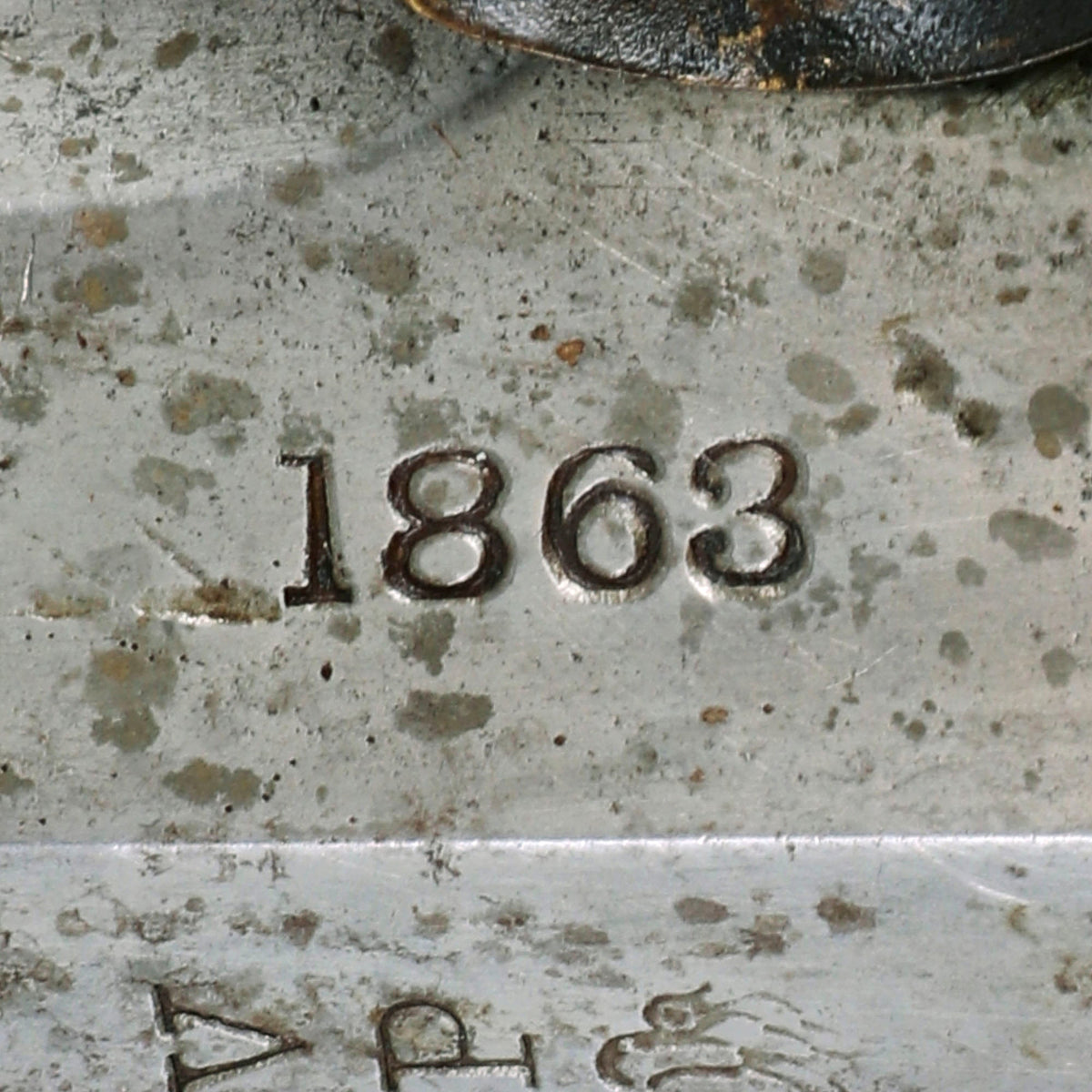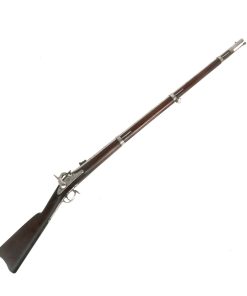Original Excellent U.S. Civil War Springfield Model 1861 Rifled Musket by Springfield Arsenal – Dated 1863 Original Items
$ 2.195,00 $ 548,75
Original Item: Only One Available. The Springfield Model 1861 was a Minié-type rifled musket shoulder-arm used by the United States Army and Marine Corps during the American Civil War. Commonly referred to as the “Springfield” (after its original place of production, Springfield, Massachusetts), it was the most widely used U.S. Army weapon during the Civil War, favored for its range, accuracy, and reliability.
The barrel was 40 inches long, firing a .58 caliber Minié ball, and the total weight was approximately 9 pounds. The Springfield had an effective range of 200 to 300 yards, and used percussion caps to fire (rather than the flintlocks of the 18th century, the last U.S. flintlock musket was the Model 1840). Trained troops were able to fire at a rate of three aimed shots per minute while maintaining accuracy up to 500 yards, though firing distances in the war were often much shorter. The most notable difference between the Model 1861 and the earlier Model 1855 was the elimination of the Maynard tape primer for the Model 1861 (the Maynard primer, a self-feeding primer system, was unreliable in damp weather, and the priming mechanism was expensive and time-consuming to produce). Further, unlike the Model 1855, the Model 1861 was never produced in a two-banded “short rifle” configuration.
The Springfield was aimed using flip-up leaf sights. The sight had two leaves, one for 300 yards and the other for 500 yards, and with both leaves down, the sight was set for a range of 100 yards. By contrast, the British Pattern 1853 Enfield, favored by the Confederates, utilized a ladder-sight system with 100 yard increments, using steps from 100 to 400 yards and a flip up ladder for ranges beyond 500 yards. While the Enfield’s sights did allow finer range settings, the Springfield’s simple leaves were more rugged and were less expensive to produce. The Enfield’s sights extended to 900 yards (and further, on later models), compared to the 500 yard maximum range of the Springfield’s sights. Realistically, though, hitting anything beyond 600 yards with either weapon was mostly a matter of luck. While the sight designs were very different, the two weapons were otherwise very similar, and had very similar effective ranges.
The Springfield Rifle cost $20 each at the Springfield Armory, where they were officially made. Overwhelmed by the demand, the armory opened its weapons patterns up to twenty private contractors, however this example was produced at Springfield Arsenal itself.
The Model 1861 was relatively scarce in the early years of the Civil War (many troops were still using Model 1842 smoothbored muskets and Model 1816/1822 muskets converted to percussion cap primers, both in .69 caliber). It is unlikely that any of these were available for use in the First Battle of Bull Run. However, over time, more and more regiments began receiving Model 1861 rifled muskets, though this upgrade appeared somewhat quicker in the Eastern Theater of Operations. Over 1,000,000 Model 1861 rifles were produced, with the Springfield Armory increasing its production during the war by contracting out to twenty other firms in the Union. The number of Model 1861 muskets produced by the Springfield Armory was 265,129 between January 1, 1861 and December 31, 1863. According to United States Muskets, Rifles and Carbines by Arcadi Gluckman Colonel Infantry, United States Army, published 1949.
After the war ended, many model 1861 and 1863 rifled muskets were modified to a breech loading actions with new metallic cartridges. With these modifications, the basic 1861 evolved into the Springfield Model 1873 which served the US until being replaced in the 1890s by modern breech loading rifles chambered for new smokeless powder rounds that were far superior to the Model 1873.
This excellent example however was not converted, and is still in the original percussion configuration. It looks to have seen little to no service during the war, and is honestly one of the best that we have ever seen. We do not see any signs of major cleaning or restoration, and it just shows a bit of light oxidation in areas on the bright steel hardware. It’s very rare that we get such a great example, not messed with over the years.
It is dated 1863 on the lock plate tail, and also has a clear Federal Eagle stamped into the lock to the left of U.S. / SPRINGFIELD, indicating production at the United States Armory and Arsenal at Springfield, in Springfield, Massachusetts. The markings on the lock plate all crisp and fully legible. The barrel tang still has a crisp 1863 date on it, and the nocks form still has clear V / P / Eagle’s Head proof marks. There is even a legible “boxed” DWT cartouche on the left side of the stock, for inspector D. Waldo Tyler, who worked during the 1862-1863 period.
The one piece walnut stock has a beautiful red brown color that only old and aged oiled walnut achieves. There are no cracks or major damage we can see, and no evidence of refinishing. There are just a few small dents, scuffs, and gouges, hard to avoid on a 150+ year old rifled musket. The metalwork overall still shows much of the original bright finish, with just a bit of light staining and surface oxidation in areas. The three leaf rear sight is in good condition, though it does look like the 100 / 200 yard double leaf was replaced.
The bore is in excellent condition, showing a bright finish with crisp lands and grooves. The original machining marks in the grooves are still visible, and there is little sign that it was ever used. Just a few spots of oxidation keep it from being MINT. The cap nipple is in very good condition, and had a brass “flash guard” installed around it to protect the wood and metalwork. The cleanout is currently frozen from age, and as the screw still bears the original bluing, we did not want to mar it by attempting to remove it from the bolster. The lock functions, holding correctly at half cock and firing at full. The three barrel bands still have their U markings, with a U.S. on the butt plate tang. The ramrod is the correct and original tulip type with an enlarged shank and intact threading on the other end. Both sling swivels are still present and move easily.
This is a great chance to pick up an exceptional example of a Civil War Rifled Musket, made at Springfield Arsenal itself. Ready to display!
Specifications:-
Year of Manufacture: 1863
Caliber: .58″
Cartridge Type: Minié Ball and Powder
Barrel Length: 40 Inches
Overall Length: 56 Inches
Action type: Side Action Lock
Feed System: Muzzle Loaded
NOTE: International orders of antique firearms MUST be shipped using UPS WW Services (courier). USPS Priority Mail international will not accept these. International customers should always consult their country’s antique gun laws prior to ordering.
Fast Shipping with Professional Packaging
Thanks to our longstanding association with UPS FedEx DHL, and other major international carriers, we are able to provide a range of shipping options. Our warehouse staff is expertly trained and will wrap your products according to our exact and precise specifications. Prior to shipping, your goods will be thoroughly examined and securely secured. We ship to thousands clients each day across multiple countries. This shows how we're dedicated to be the largest retailer on the internet. Warehouses and distribution centres can be located throughout Europe as well as the USA.
Note: Orders with more than one item will be assigned a processing date depending on the item.
Before shipping before shipping, we'll conduct a thorough inspection of the items you have ordered. Today, the majority of orders will be delivered within 48 hours. The delivery time will be between 3-7 days.
Returns
The stock is dynamic and we cannot completely manage it because multiple stakeholders are involved, including our factory and warehouse. So the actual stock may alter at any time. It's possible that you may not receive your order once the order has been made.
Our policy is valid for a period of 30 days. If you don't receive the product within 30 days, we are not able to issue a refund or an exchange.
You can only return an item if it is unused and in the same state as the day you received it. You must have the item in its original packaging.
Related products
Uncategorized
Uncategorized
Uncategorized
Uncategorized
Uncategorized
Uncategorized
Armoured Fighting Vehicles of the World: AFVs of World War One (Hardcover Book) New Made Items
Uncategorized
Uncategorized
Uncategorized
Uncategorized
Uncategorized
Uncategorized
Australian WWII Owen MK1 Machine Carbine SMG Custom Fabricated Replica with Sling Original Items
Uncategorized
Uncategorized
Uncategorized
Uncategorized
Uncategorized
Angolan Rebel 1970s era 60mm Inert Display Mortar from Angolan Civil War Original Items
Uncategorized
